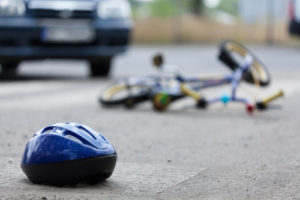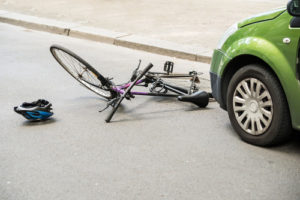

Bicycle Accidents
 It will do well for bicycle riders in South Carolina to continue exercising more than average caution when taking to the streets. The state has one of the highest death rates for bicyclists in the United States.
It will do well for bicycle riders in South Carolina to continue exercising more than average caution when taking to the streets. The state has one of the highest death rates for bicyclists in the United States.
In 2010, South Carolina’s bicyclist fatality rate stood at 3.02 fatalities per million people, according to data from the National Highway Traffic Safety Administration (NHTSA). The state’s fatality rate in 2010 was also 50% higher than the U.S. rate of two deaths per million people.
Because of this, South Carolina has had to cope with the unenviable reputation of being fourth among the Top 10 states with the highest bicyclist fatality rate.
This unnerving reality has been little changed by the state government’s effort to reduce the number of bicycle accidents and fatalities.
The “2016 Benchmarking Report: Bicycling and Walking in the United States,” a bi-annual report that collects and analyzes data from all 50 states, reported that 2% of all traffic fatalities in South Carolina were bicyclists (compared to 3.02% in 2010). The report said this finding saw no change from the report issued two years earlier.
It also found that African-American bicyclists were involved in more bicycle accidents than any other ethnic group. African-Americans comprise 28% of South Carolina’s population, but some 39% of all pedestrian and bicycle crashes from 2009-2015 involved African-Americans, according to an analysis of crash data.
Bike-car accidents are the most common
Almost one in three bicycle accidents in the U.S. involve a car, meaning that bike-car accidents are the leading type of bicycle accident. Most bicycle accidents and deaths occur in urban areas.
Under state law, a person riding a bicycle is granted all of the rights, and is subject to all of the duties imposed on a driver of a vehicle.
Since they’re considered motor vehicles in South Carolina, bicycles must obey traffic laws applicable to cars and other motor vehicles. There, are, however, laws applicable only to bicycles, which can vary by municipality.
A court will determine fault by examining how all parties behaved in the events that caused the accident, and which parties were negligent.
Bicyclists injured in an accident might be able to recover damages for medical bills and lost wages, for example. They can also recover non-economic damages such as pain and suffering inflicted and emotional distress.
If the accident was caused by errors on the part of both cyclist and driver, however, the court will determine who will pay damages depending on which party was more at fault.
“Comparative negligence” doctrine
In cases involving bicycles, South Carolina is unique in that it has a doctrine called “comparative negligence.” This means that if a cyclist is found to be partially responsible for the accident, the cyclist can still receive compensation as long as he’s not responsible for more than 50% of the accident.
The exact percentages are decided by a jury that also determines the amount of negligence of each party. How much compensation awarded depends on the percentages.
For example, if the cyclist is found to be 25% responsible for the accident, and the car driver responsible for 75%, the bicyclist will get 75% of the amount in damages rather than the full 100%.
Protecting cyclists in South Carolina
 South Carolina is cognizant of the hazards faced by cyclists and has passed a number of bicycle laws seeking to protect them.
South Carolina is cognizant of the hazards faced by cyclists and has passed a number of bicycle laws seeking to protect them.
It specifically prohibits harassment of cyclists, and makes it “unlawful to harass, taunt, or maliciously throw an object at or in the direction of any person riding a bicycle.” For their protection, bicyclists are required to ride as near to the right side of the roadway as practical. A bicyclist may, but is not required, to ride on the shoulder of the road.
A cyclist may ride in a lane other than a right-handed lane if only one lane is available that permits the bicyclist to continue on their intended route.
Every motor vehicle driver has the duty to exercise due care to maintain a safe operating distance between their vehicle and a bicycle.
Despite these precautions, there are still far too many accidents involving bicyclists in South Carolina than should be the case.
How to avoid bicycle accidents
It pays to know the most common causes of bicycle accidents are so you can better avoid them. Remember that most accidents involving bicycles have to do with unsafe encounters with cars and other motor vehicles.
* Bicyclist using the wrong side of the road;
* Bicyclist making unsafe turns;
* Bicyclist weaving in and out of traffic;
* Car driver making unsafe left or right turn;
* Car driver following too closely behind a bicyclist;
* Car driver not yielding to a bicyclist with the right of way;
* Car driver falling to maintain a safe distance between a car lane and a bicycle lane.
* Opening a car door (called “dooring”) as a cyclist passes;
Contact Kassel McVey
If you’ve been involved in a bicycle accident in South Carolina, especially if you’ve been injured, Kassel McVey can assist in recovering compensation for your bicycle accident injures.
Our bicycle accident attorneys are committed to protecting your best interests as you face the physical, emotional, and financial consequences of your accident. Call us immediately if you were injured or seriously injured in a bicycle accident due to the actions of a negligent driver.
Our legal team at Kassel McVey has years of experience in successfully handling accident claims, and are determined and able to protect your rights.
Call Kassel McVey today at (803) 256-4242 for a free evaluation of your case.
Personal Injury Lawyers 1330 Laurel Street Columbia, SC 29201 Phone: 803-256-4242
Mailing Address
Post Office Box 1476
Columbia, South Carolina 29202
Fax: (803) 256-1952
Copyright © 2023 John D. Kassel, Attorney at Law, LLC. All rights reserved. Privacy Policy I Terms of Service | Disclaimer
This website is designed for general information only. The information should not be construed to constitute formal legal advice or the formation of a lawyer/client relationship. The results and testimonials listed on this website are specific to the facts and legal circumstances of specific cases and should not be used to form an expectation that the same results could be obtained for other clients in similar matters. This list is not a description or characterization of the quality of the firm's representation, it is not intended to compare one attorney's work to another and is in no way a guarantee of a specific result for your case.
